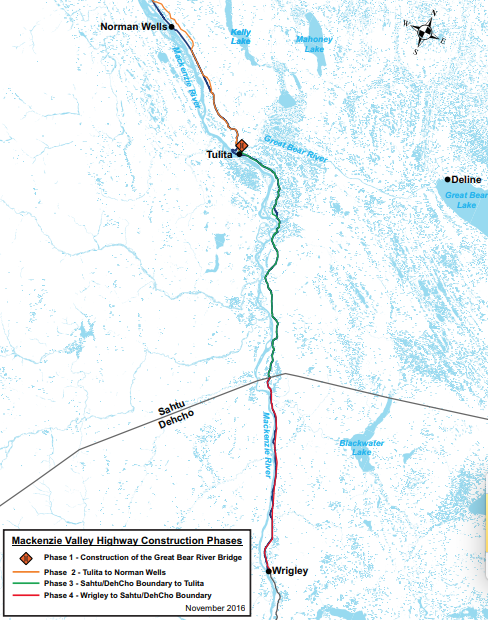
Feds commit $102.5M to bridge and all-weather road development in NWT
June 28, 2018
By
CCE
Phases of the Mackenzie Valley Highway project include a bridge over Great Bear River and all-weather road construction.

(source: Government of Northwest Territories)
The Government of Canada has confirmed an investment of $102.5 million to support several key phases of the longer-term, Mackenzie Valley Highway (MVH) project that will reduce the cost of essential goods and help local businesses compete by moving goods to market. The northernmost section of the MVH, the Inuvik Tuktoyaktuk Highway, opened to traffic on November 15, 2017.
Key elements of the MVH project include:
- construction of a bridge over the Great Bear River, which will improve the resiliency of the winter road to climate change, enhance safety, extend the number of operating days of the winter road by two to four weeks, and enhance the efficiency of community resupply operations;
- construction of a 15km all-weather road from Wrigley north to Mount Gaudet; and
- next steps in moving forward with the Mackenzie Valley Highway, including environmental and planning studies. The studies will inform final routing and design for the eventual construction of the all-weather highway, leading to obtaining permits for road construction.
The Government of Northwest Territories is contributing $37.5 million to the project for a total combined investment from both governments of $140 million.
“I am pleased to see this project going ahead. Extending the operating days of the winter road greatly improves the flow of goods to Northern communities, allows for more inter-community travel and will help decrease the cost of living,” said Michael McLeod, Member of Parliament for Northwest Territories, in a media release.
The federal funding is part of the National Trade Corridors Fund which is designed to allow the government to address important capacity constraints and freight bottlenecks on a national and system-wide basis, as well as addressing Canada’s territorial North specific issues including safety and economic development.